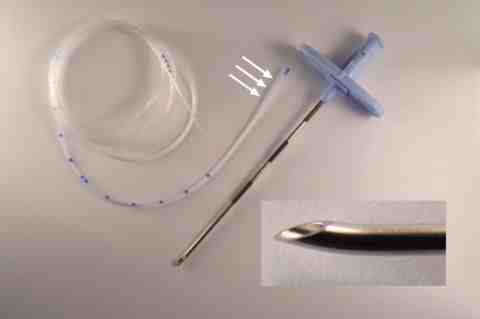Needles and Catheters
Needles
The Tuohy needle is the standard needle for placing epidural catheters. It has a stainless steel shaft which is marked in centimetres to enable the depth of the epidural space to be estimated. Its tip is curved, which enables it to retain a cutting edge, whilst reducing the chance of dural puncture when the epidural space is entered. It has detachable 'wings' which can be used to hold and manoeuvre the needle. It has an obturator that should always be in place when inserting the needle through the skin to avoid implanting plugs of dermal cells, which can result in the formation of a deep dermoid cyst.
Catheters
These are small gauge, non compressible, kink-resistant tubes, made of synthetic material such as polyethylene or less common silicone. They have centimetre markings along their length that enable the operator to insert (or withdraw) the catheter to an appropriate depth. Some catheters have a single end orifice, but the more commonly used ones have multiple orifices placed proximal to the catheter end. This arrangement decreases the incidence of catheter occlusion. The catheter connects via an adaptor to permit connection to standard Luer connectors.
